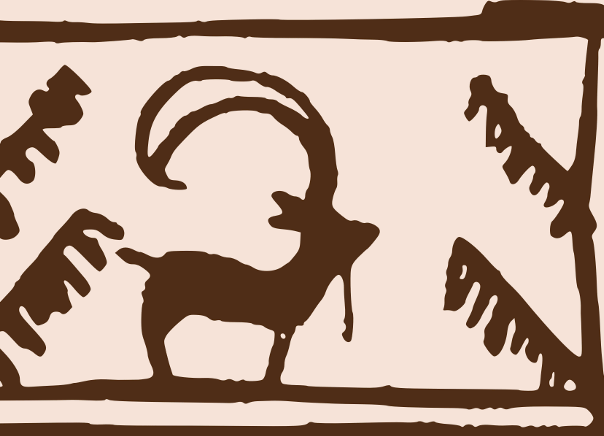
By some accounts, the history of animation stretches back to the turn of the twentieth century. Since that time, animators have brought an astounding variety of visions to artistic life. But looked at another way, this enterprise — which has so far culminated in feature-film spectacles by studios like Pixar and Ghibli — actually has it roots deep in antiquity. In order to find the first work of animation, broadly conceived, one must go to Shahr-e Sukhteh, Iran’s famous “Burnt City.” Now a UNESCO World Heritage site, it dates back more than five millennia, about four of which it spent under a layer of ash and dust, which preserved a great many artifacts of interest within.
Shahr-e Sukhteh was first excavated in 1967. About a decade later, an Italian archaeological team unearthed the pottery vessel bearing designs now considered the earliest example of animation. “The artifact bears five images depicting a wild goat jumping up to eat the leaves of a tree,” says the web site of the Circle of Ancient Iranian Studies. “Several years later, Iranian archaeologist Dr. Mansur Sadjadi, who became later appointed as the new director of the archaeological team working at the Burnt City discovered that the pictures formed a related series.” The animal depicted is a member of Capra aegagrus, “also known as ‘Persian desert Ibex’, and since it is an indigenous animal to the region, it would naturally appear in the iconography of the Burnt City.”

Image by Emesik, via Wikimedia Commons
This amusingly decorated goblet, now on display at the National Museum of Iran, is hardly the only find that reflects the surprising development of the early civilization that produced it. “The world’s first known artificial eyeball, with two holes in both sides and a golden thread to hold it in place, has been unearthed from the skeleton of a woman’s body in Shahr-e Sukhteh,” says Mehr News. Excavations have also turned up “the oldest signs of brain surgery,” as well as evidence that “the people of Shahr-e Sukhteh played backgammon,” or at least some kind of table game involving dice. But only the Burnt City’s pioneering work of flip-book-style art “means that the world’s oldest cartoon character is a goat.” Historians of animation, update your files accordingly.
Related content:
Watch Art on Ancient Greek Vases Come to Life with 21st-Century Animation
The Early Days of Animation Preserved in UCLA’s Video Archive
Early Japanese Animations: The Origins of Anime (1917-1931)
700 Years of Persian Manuscripts Now Digitized and Available Online
Was a 32,000-Year-Old Cave Painting the Earliest Form of Cinema?
Based in Seoul, Colin Marshall writes and broadcasts on cities, language, and culture. His projects include the Substack newsletter Books on Cities, the book The Stateless City: a Walk through 21st-Century Los Angeles and the video series The City in Cinema. Follow him on Twitter at @colinmarshall or on Facebook.
0 Commentaires